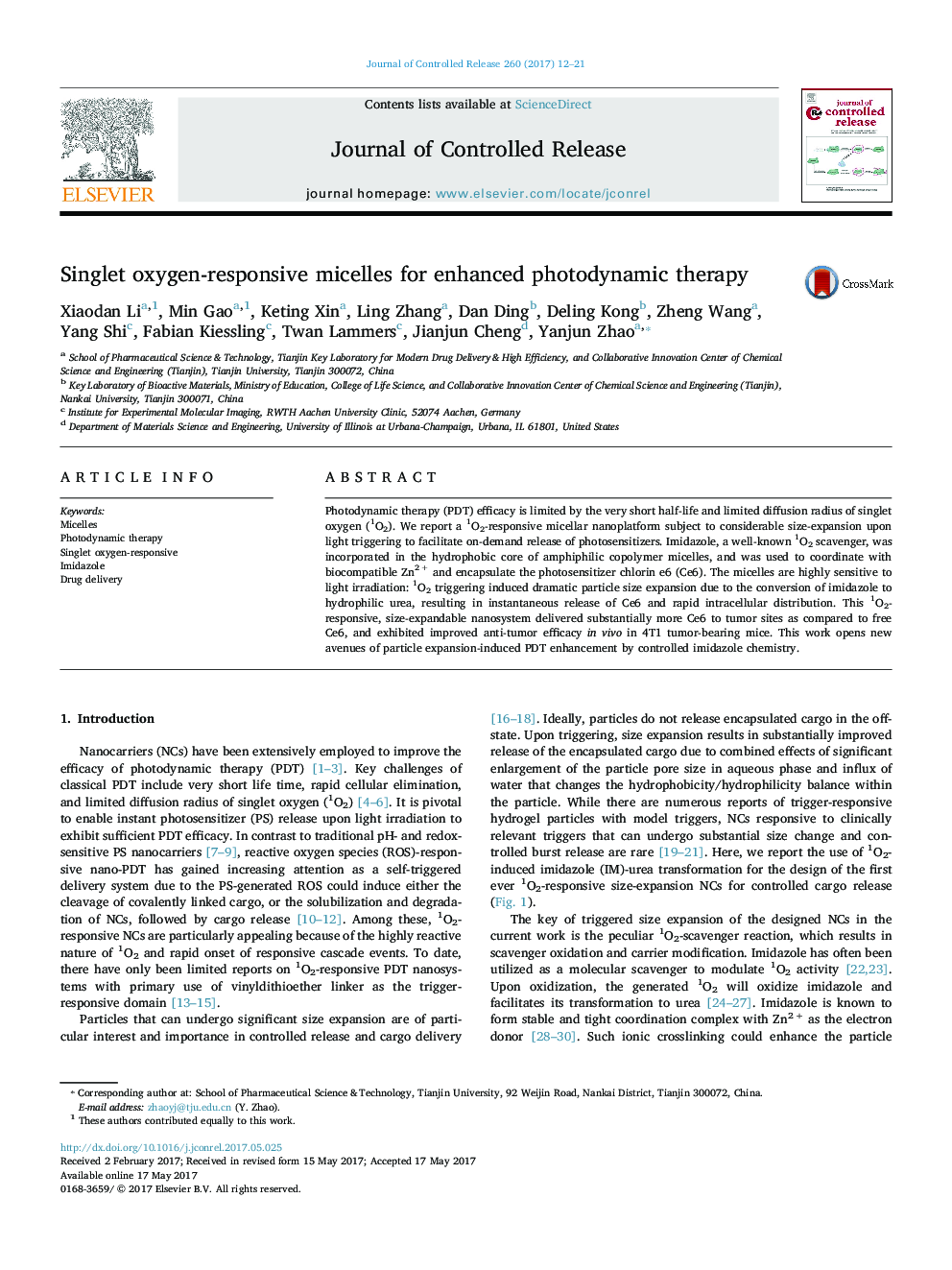| Article ID | Journal | Published Year | Pages | File Type |
|---|---|---|---|---|
| 5433502 | Journal of Controlled Release | 2017 | 10 Pages |
Photodynamic therapy (PDT) efficacy is limited by the very short half-life and limited diffusion radius of singlet oxygen (1O2). We report a 1O2-responsive micellar nanoplatform subject to considerable size-expansion upon light triggering to facilitate on-demand release of photosensitizers. Imidazole, a well-known 1O2 scavenger, was incorporated in the hydrophobic core of amphiphilic copolymer micelles, and was used to coordinate with biocompatible Zn2Â + and encapsulate the photosensitizer chlorin e6 (Ce6). The micelles are highly sensitive to light irradiation: 1O2 triggering induced dramatic particle size expansion due to the conversion of imidazole to hydrophilic urea, resulting in instantaneous release of Ce6 and rapid intracellular distribution. This 1O2-responsive, size-expandable nanosystem delivered substantially more Ce6 to tumor sites as compared to free Ce6, and exhibited improved anti-tumor efficacy in vivo in 4T1 tumor-bearing mice. This work opens new avenues of particle expansion-induced PDT enhancement by controlled imidazole chemistry.
Graphical abstractDownload high-res image (159KB)Download full-size image
